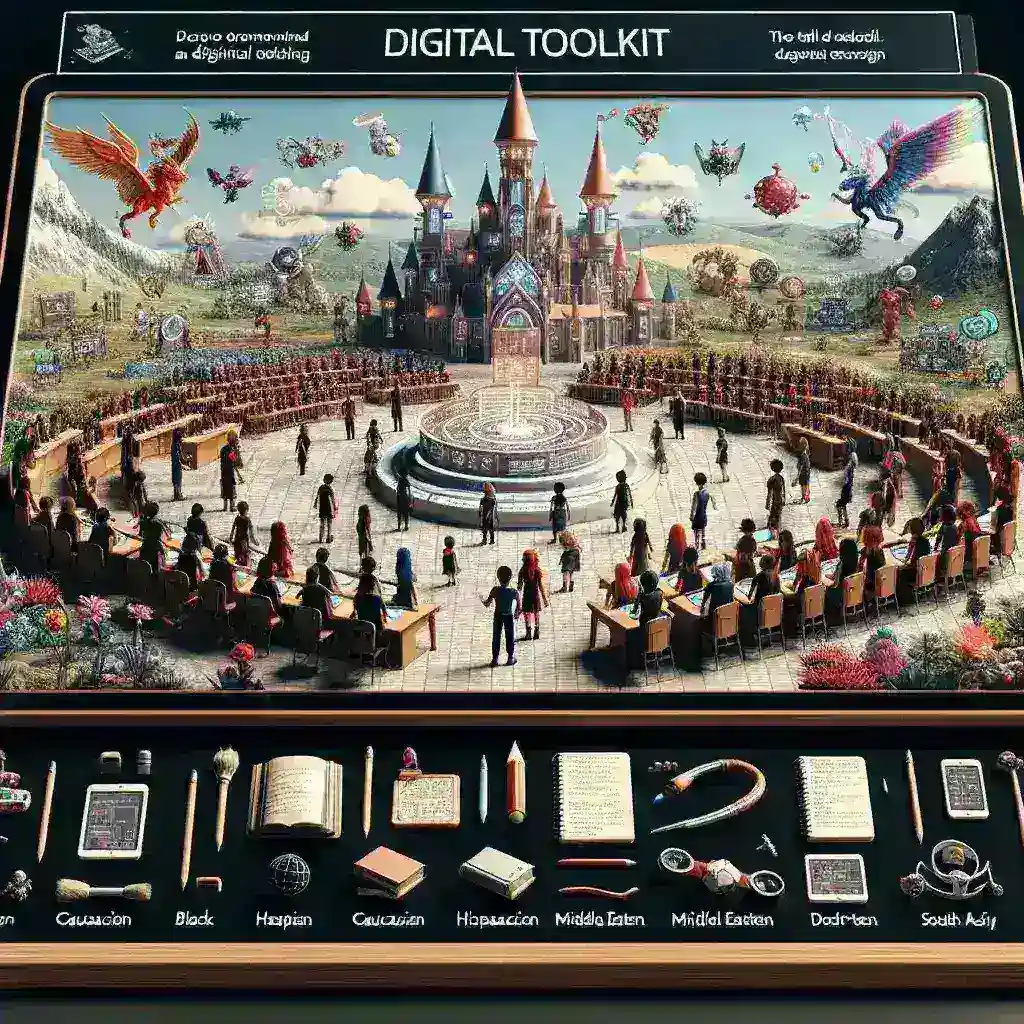Introduction
In an era where digital interaction shapes our everyday lives, Epic Games is taking a bold step forward by launching an innovative metaverse toolkit aimed specifically at schools and educators. This toolkit is designed to empower educators and students alike, bringing interactive learning experiences into the classroom. With virtual reality (VR), augmented reality (AR), and immersive 3D environments, the opportunities for engagement are endless. This article delves into the specifics of this launch, its historical context, implications for the future of education, and the potential benefits and challenges that come with it.
Historical Context of Metaverse in Education
The concept of the metaverse isn’t new; it has evolved significantly over the years. Originally seen in science fiction, the metaverse now encompasses various digital experiences that blend the physical and virtual worlds. In education, the integration of technology has historically been a driving force for change. From the introduction of computers in classrooms in the 1980s to the widespread adoption of online learning platforms in the 21st century, educators have constantly adapted to technological advancements.
The COVID-19 pandemic accelerated this trend, pushing educators to explore more immersive and digital solutions for teaching. Epic Games, known for its popular gaming engine Unreal Engine, recognized this shift and sought to create tools that could harness the power of the metaverse for educational purposes.
The Launch of Epic Games’ Metaverse Toolkit
On [insert launch date], Epic Games unveiled its metaverse toolkit, a comprehensive suite of resources tailored for educators. This toolkit is designed to facilitate the creation of immersive learning experiences, enabling educators to craft virtual classrooms, simulations, and interactive lessons with ease.
Key Features of the Toolkit
- User-Friendly Interface: The toolkit features an intuitive interface, allowing educators with varying levels of technical expertise to create engaging content without requiring advanced coding skills.
- Customizable Environments: Educators can design and customize virtual spaces to align with their curriculum, providing students with an interactive environment that enhances learning.
- Collaborative Tools: The toolkit includes features that promote collaboration among students, enabling them to work together on projects in a safe virtual space.
- Integration with Existing Curricula: Educators can seamlessly integrate the toolkit into their existing lesson plans, making it a flexible addition to any educational framework.
- Support for Multiple Devices: The toolkit is designed to work across various devices, ensuring that all students have access to the learning materials, whether in class or at home.
Future Implications of the Metaverse in Education
The launch of Epic Games’ metaverse toolkit poses several implications for the future of education. As the education sector continues to embrace digital transformation, the metaverse may become a standard component of learning environments.
Predictions for the Future
- Enhanced Engagement: The immersive nature of the metaverse is likely to boost student engagement, making learning more enjoyable and effective.
- Global Collaboration: Students from different geographical locations can collaborate in real-time, fostering a global perspective and understanding of diverse cultures.
- Personalized Learning: Educators can tailor experiences to meet individual student needs, allowing for personalized learning pathways.
- New Career Opportunities: As digital skills become increasingly important, students will gain exposure to new career paths related to the metaverse, such as game design, virtual architecture, and digital content creation.
Pros and Cons of the Metaverse Toolkit
Pros
- Innovative Learning Experiences: The toolkit provides unique opportunities for hands-on learning that traditional methods may not offer.
- Accessibility: The virtual nature of the toolkit ensures that education can continue even in challenging circumstances, such as during a pandemic.
- Engagement and Motivation: By leveraging the excitement of the metaverse, educators can motivate students who may otherwise struggle with conventional learning.
Cons
- Digital Divide: Not all students may have equal access to the necessary technology, which could exacerbate existing inequalities.
- Training Requirements: Teachers may require additional training to fully utilize the toolkit, which could pose challenges for implementation.
- Potential for Distraction: The immersive nature of the metaverse could lead to distractions if not managed properly.
Case Studies and Real-World Applications
Several schools and institutions have already started experimenting with immersive learning technologies. For instance, a middle school in [insert location] implemented a VR program that allowed students to explore historical landmarks virtually, bringing history lessons to life. Similarly, a high school in [insert location] used augmented reality to enhance science lessons, allowing students to visualize complex biological processes.
Conclusion
Epic Games’ launch of the metaverse toolkit for schools and educators marks a significant milestone in the evolution of educational technology. By creating an immersive, interactive platform for learning, Epic Games is not only enhancing the educational experience but also preparing students for a future where digital skills are paramount. As educators embrace this new frontier, the potential for innovation in teaching and learning is limitless. The journey into the metaverse has just begun, and it holds the promise of transforming education as we know it.

Leave a Reply